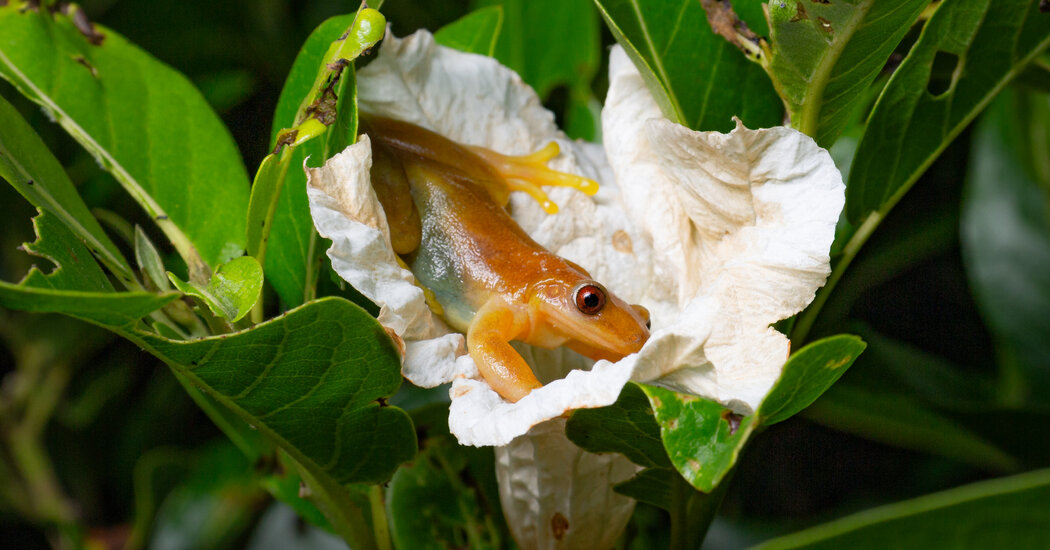Is a Harmful Algae Killing Hundreds of Sea Lions in California?
The calls came in, one after the other, with reports of sea lions swaying their heads back and forth, foaming at the mouth, or slumped, lifeless on the beach. Rescuers along the central California coast struggled to keep up as they captured the sick animals in the hopes of saving them. Already, hundreds of sea lions and dozens of dolphins had died.
The marine mammals — considered “sentinel” species because of what they tell humans about the health of the ocean — are believed to be falling sick from a scourge of harmful algae that occur naturally but can be made worse by human activity.
The algae, Pseudo-nitzschia, produces a neurotoxin called domoic acid, which makes its way up the food chain from anchovies to sea lions and dolphins, causing lethargy, disorientation, vomiting, bulging eyes, muscle spasms, seizures and, in severe cases, death. The animals are appearing, sick and beached, along the shoreline from Santa Barbara to San Luis Obispo County.
Rescuers say it is among the worst mass poisoning events they’ve ever seen. And it’s only June.
“It’s been really sad,” said Michelle Berman Kowalewski, a biologist and the director of the Channel Islands Cetacean Research Unit, a nonprofit that has been responding to the beached dolphins. Algal blooms are not uncommon, but Ms. Berman Kowalewski said that, even in a bad year, she might respond to 30 to 40 poisoned dolphins. “This year, we have been averaging about 10 animals a day for 10 days,” she said.
At the same time, more than 1,000 concerned beachgoers have reported dead and sick marine mammals to the Channel Island Marine and Wildlife Institute, a conservation nonprofit that rescues and rehabilitates marine animals. Volunteers have responded to the calls, capturing the distressed animals in nets so they can be transported to the institute’s center for treatment.
“We are doing the best we can to keep up with the intense pace,” Ruth Dover, the managing director of the wildlife institute, told the National Oceanic and Atmospheric Administration. “Please continue to report all sick and injured marine mammals as we are getting to as many animals as we can, as quickly as we can, each day,” she said.
Conservation groups are still awaiting test results to confirm what is sickening the animals, but their symptoms, combined with high concentrations of domoic acid from Orange County to San Luis Obispo County, indicate the toxin is the likely culprit. While algal blooms occur naturally, human activities that disturb ecosystems are thought to play a role in their more frequent occurrence and heightened intensity. This includes pollution and climate change, according to the NOAA.
A similar episode in August led to the stranding of dozens of sea lions. Large numbers of sea mammals also died from the toxin in 2015 and 2007.
Domoic acid does not affect humans unless they consume it in contaminated seafood, such as mussels or crabs. The California Department of Public Health closely monitors fisheries for toxins, occasionally closing them. Last week, the department cautioned against eating mussels, clams or scallops harvested recreationally from Santa Barbara County after “dangerous levels” of domoic acid were detected in the shellfish. A quarantine on such mussels from along the California coast is also in effect.
Ms. Berman Kowalewski, the dolphin biologist, said that, for now, she and her team were overwhelmed but would continue responding to the grim calls, and try to study dolphins more deeply, hoping that, eventually, the algal bloom will pass.
“I’m tired. I’m exhausted,” Ms. Berman Kowalewski said. “Another way I see it, though, is that we don’t get events like this that often. So when we do have times like this, it’s important for us to glean as much knowledge as we can.”


